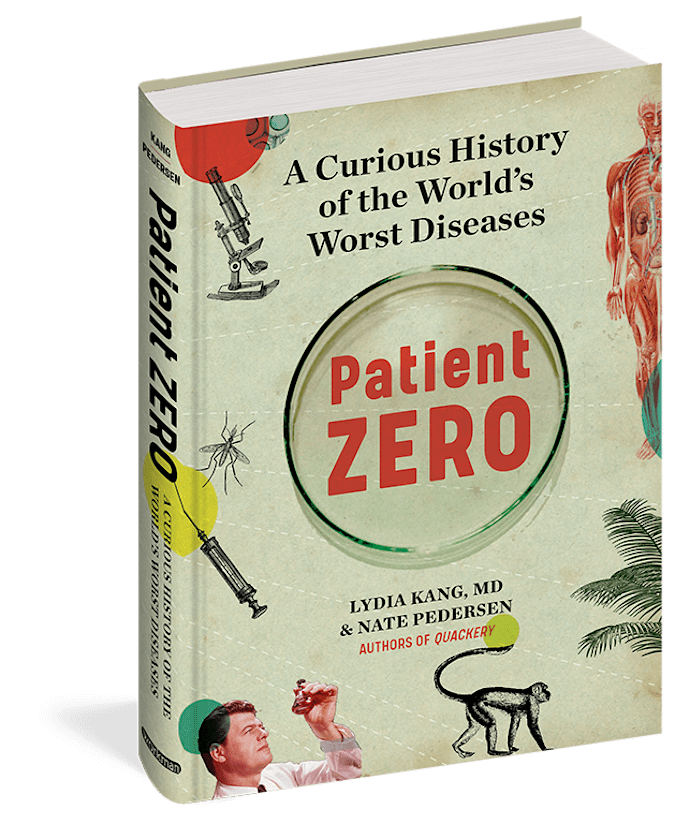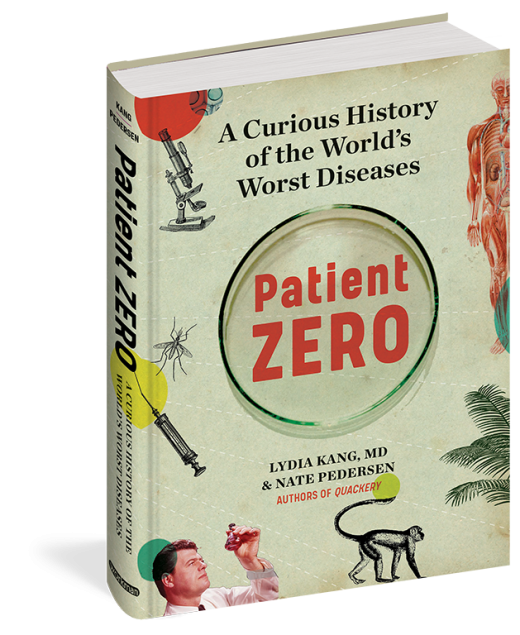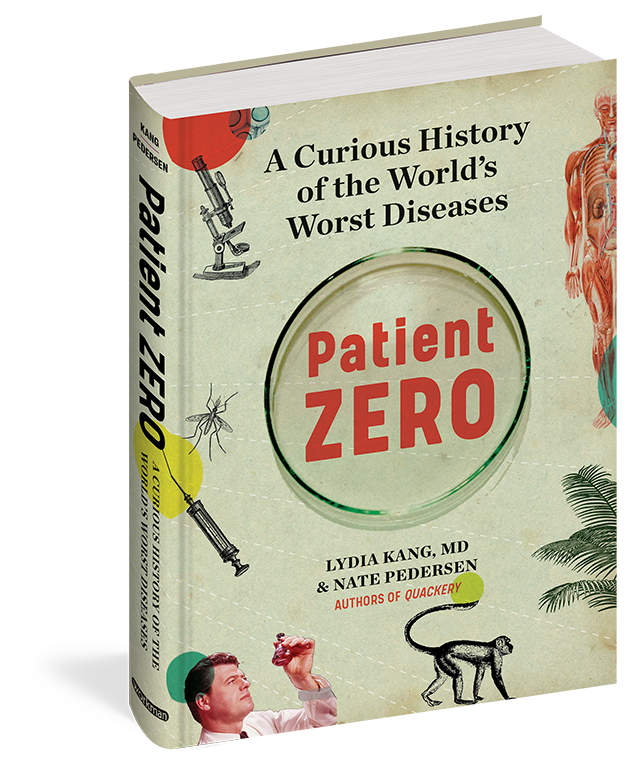Hitting the Books: An ode to the joy of antibiotics
Hitting the Books: An ode to the joy of antibiotics
Be sure to thank Emil von Behring the next time you contract diphtheria.

The stress and uncertainty surrounding the COVID pandemic, along with misinformation about the life-saving vaccines developed in response have broken many a weak mind over the past two years, leading people to try everything from injecting themselves with bleach and inhaling nebulized hydrogen peroxide, to slugging down horse dewormer in misguided attempts to outwit modern medicine. Surprise, none of it actually works. What’s worse is that this sort of behavior is nothing new. Quack homeopathic remedies have existed for centuries — curing the bubonic plague through blood letting, self-flagellation, or sitting in hot sewers to drive off the fever, for example — and supported by little more than anecdotal evidence.
In their latest book, Patient Zero: A Curious History of the World’s Worst Diseases, Dr. Lydia Kang and Nate Pedersen delve into the fascinating histories of some of humanity’s deadliest diseases and the society-preserving works of the scientists who the developed cures, vaccines and treatments to counter them. In the excerpt below, we take a look at the deployment of antibiotics and antitoxins in the fight against diphtheria, anthrax, and other deadly diseases.

Excerpted from Patient Zero: A Curious History of the World’s Worst Diseases by Lydia Kang, MD, and Nate Pedersen. Workman Publishing © 2021
Aside from putting barriers between us and plagues, the next primary approach to defeating them was to attack them directly, thanks to breakthroughs in science that created and discovered antibiotics and antitoxins. Some of these medicines aren’t simply employed against microorganisms like bacteria, but act as antifungals, antivirals, and antiparasitics as well. Today, there are more than a hundred types of medicines in this group. The World Health Organization (WHO) maintains a list of medicines deemed essential for a country’s healthcare system to best care for its citizenry, and a large chunk of those essential meds battle infectious diseases.
Some might assume that penicillin was the first definitive weapon discovered in our fight against pathogens, but there were several that preceded it and broke significant ground when they were discovered.
The Prussian-born Emil von Behring was a doctor and an assistant to the famed Robert Koch at the Institute for Hygiene in Berlin. In 1888, he developed a way to treat those suffering from diphtheria and tetanus. Not a disease familiar to many these days, diphtheria is prevented by a vaccine that is usually coupled with your routine tetanus shot. In the 1800s, diphtheria was a terrible killer that inflamed a victim’s heart, inflicted paralysis, and caused a suffocating membrane to cover the throat. In Spain, the disease was so rampant in 1613 it was nicknamed El Año de los Garrotillos, or “The Year of Strangulations.”
Much of the disease caused by diphtheria is driven by the toxin created by Corynebacterium diphtheriae. Von Behring infected rats, rabbits, and guinea pigs with weakened (attenuated) forms of it, then gathered their serum—the liquid fraction of their blood, minus the red and white blood cells. That light, honey-colored liquid, which contained antibodies to the diphtheria toxin, was then injected into another set of animals that were sickened with fully virulent diphtheria bacteria.
The newly infected animals given the serum didn’t die because they gained a passive form of protection against the toxin with the donated serum. In 1891, a child’s life was saved using this new method for the first time. The serum was produced in large quantities using animals like sheep and horses. At a time when 50,000 children died annually from diphtheria, it was a miraculous treatment.
Tetanus serum was created soon after, becoming a workable treatment by 1915. Today, antitoxins are used to treat botulism, diphtheria, and anthrax. The same principles of antitoxin treatment are utilized for antivenom therapy to remedy poisonous animal bites, including those from black widow spiders, scorpions, box jellyfish, and cobras. A treatment called passive antibody therapy, in which the serum of patients recovered from an infection is given to other sick patients (also called convalescent plasma therapy), may have been helpful during the COVID-19 pandemic, though data is still forthcoming. Antibodies against infections can not only treat diseases like toxic shock syndrome, but prevent infections during exposures, such as those for hepatitis A and B and botulism. But the antibodies themselves have been employed to treat more than just bites, stings, and infections. Intravenous immunoglobulins from pooled donors treat a variety of disorders, such as ITP (immune thrombocytopenia) and severe immune deficiency diseases.
Another antibody therapy—monoclonal antibodies—has been a game-changer in treatments over the last decade or so, the first one approved by the FDA in 1986. These specially designed antibodies are used to treat several types of cancers (melanoma, breast, and stomach, among many others) and autoimmune diseases (including Crohn’s disease, rheumatoid arthritis, and psoriasis). The antibodies themselves are Y-shaped proteins that bind to a specific protein. In doing so, they can elicit a whole range of effects: switching on or off immune system cascades, destroying cells, blocking or engaging cell activities. The antibodies only bind to a single antigen, hence “mono,” and are produced by clones of cells that churn out the antibodies in large amounts. Sometimes they can also be bound to radioactive particles, delivering radioactivity directly to a cancer cell. Others can be bound to a chemotherapy agent. Often, they work alone.
In the realm of cancer therapy, most of us have some understanding of chemotherapy. But the origin of the term chemotherapy itself actually came from the fight to treat infections, not cancer. At the turn of the twentieth century, antibiotics had yet to establish themselves as a cure for infections. That changed with a physician and scientist named Paul Ehrlich. He was born in 1854 in East Prussia (now Poland) where his father ran a lottery office. During his career, he took advantage of the burgeoning German dye industry to experiment on how cells looked stained with different chemicals. His love of color led to some notable idiosyncrasies, like carrying colored pencil stubs in his pockets. But Ehrlich’s work led to what would become the famous Ziehl-Neelsen acid-fast stain for tuberculosis. (Unfortunately, he also stained his very own TB bacteria from his sputum, though luckily survived the illness.) Later he collaborated with the aforementioned Emil von Behring, a Nobel Prize–winning physiologist, on serum therapy for tetanus and diphtheria.
But perhaps Ehrlich’s most notable discovery happened by accident as he sought a chemical cure to treat a specific disease—a “chemotherapy.” Specifically, he hoped to cure sleeping sickness, a disease caused by a microscopic parasite called Trypanosoma brucei. He had been working with a chemical called atoxyl (meaning “nontoxic”), ironically an arsenic compound. Ehrlich coined the term “magic bullet” related to his hope of finding that perfect chemical that would hopefully kill a very specific pathogen, the Trypanosoma parasite, and not the patient. He ended up testing nine hundred variations of the arsenic compounds on mice. None were particularly effective, but he revisited #606 because it seemed to have an effect on a newly discovered bacterium believed to cause syphilis. In 1910, the medicine called Salvarsan (sometimes simply called “606”) was proven to be effective—it killed the syphilis spirochete and left the guinea pigs, rabbits, and mice alive.
In the next few decades, new research would be applied to battle not just the pandemics of old, but daily infections that could upend people’s lives. A scratch or bite could kill if those Staphylococcus or Streptococcus infections spiraled out of control. A German scientist named Gerhard Domagk began working with a group of chemicals called azo dyes that had a characteristic double nitrogen bond. Azo dyes can color textiles, leather, and foods various shades of brilliant orange, red, and yellow. When an azo compound had a sulfonamide group attached (a nitrogen and sulfur link with two oxygen atoms double-bonded to the sulfur, should you need to impress friends at a party), they knew they’d found something special. The sulfonamide group inhibits a bacteria’s ability to make folate, a necessary B vitamin. Humans, on the other hand, can obtain folate through their diet. And so another magic bullet was born. The new compound seemed to work in mice infected with Streptococcus, otherwise known as strep.
Domagk used the new medicine, called KL 730 and later patented as Prontosil, on his own daughter Hildegard. Suffering from a severe strep infection, she received a shot of Prontosil and recovered, though the drug left a telltale dyed, reddish discoloration at the injection site.
“Sulfa” drugs would go on to be used in a variety of medicines, including antibiotics (trimethoprim and sulfamethoxazole, aka Bactrim), diabetes medicines (glyburide, a sulfonylurea), diuretics (furosemide, or Lasix), pain meds (celecoxib, or Celebrex), and are also used today to treat pneumonia, skin and soft tissue infections, and urinary tract infections, among others.
Domagk’s work won him the Nobel Prize in 1935. However, the Nazis, who disapproved of how the Nobel committee tried to help German pacifist Carl von Ossietzky, had their Gestapo arrest Domagk for accepting the prize and forced him to give it back. He was able to receive it later in 1947.
(18)



